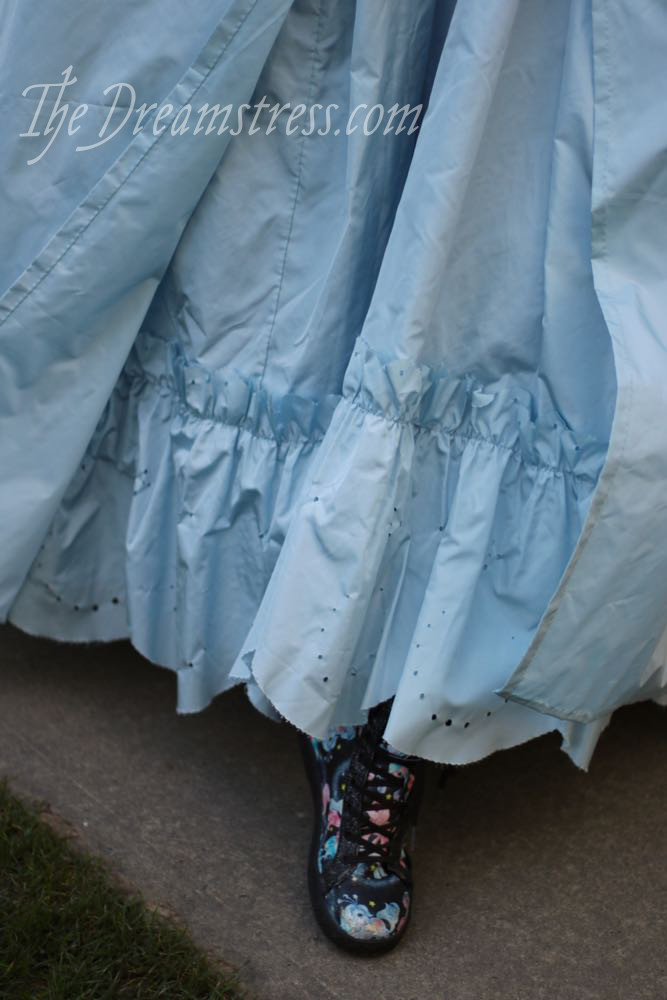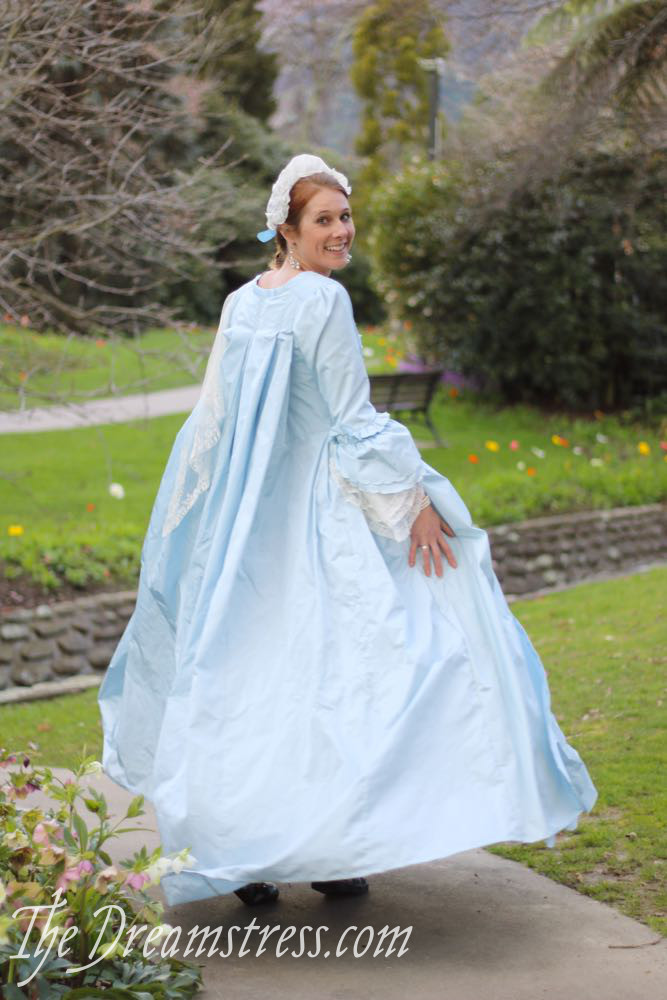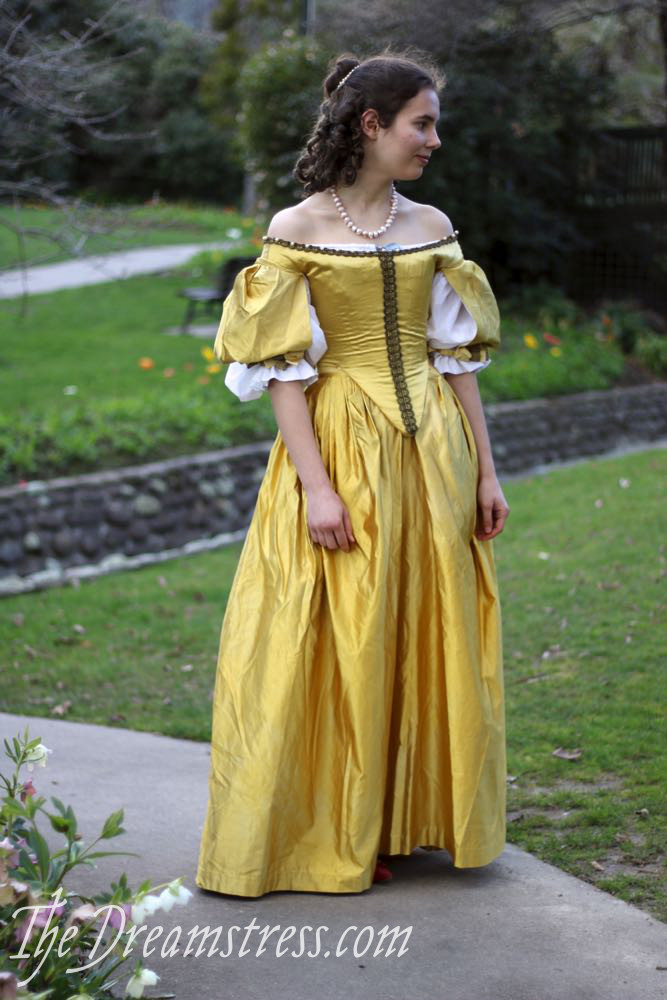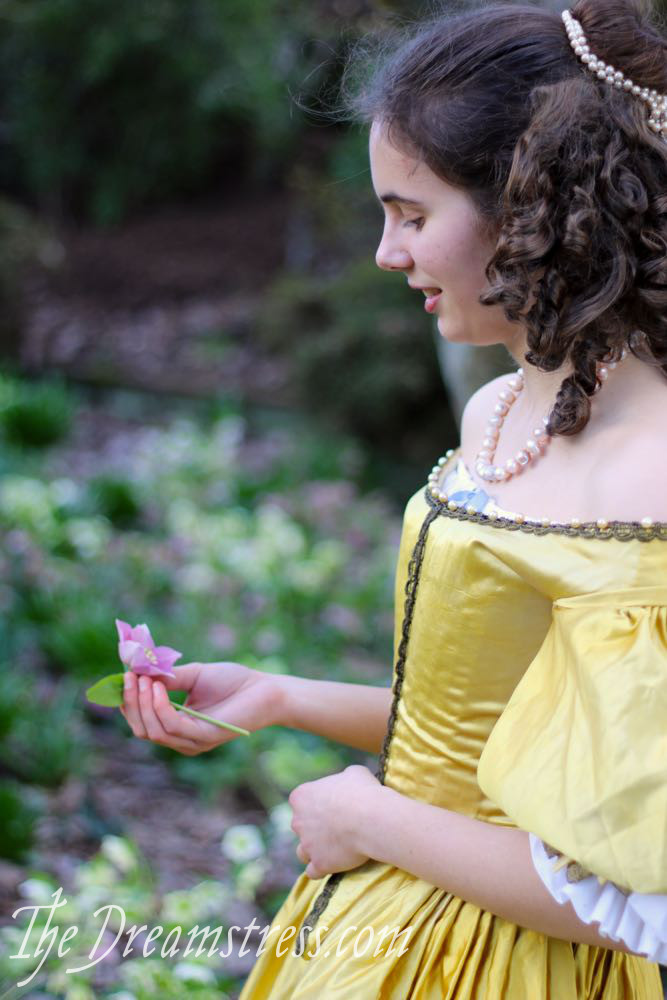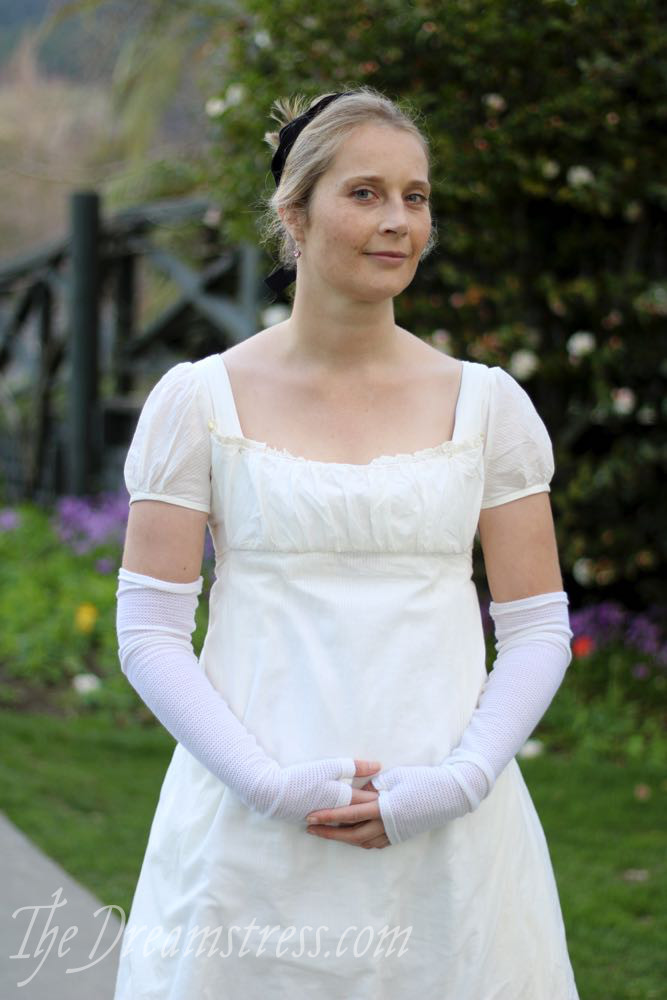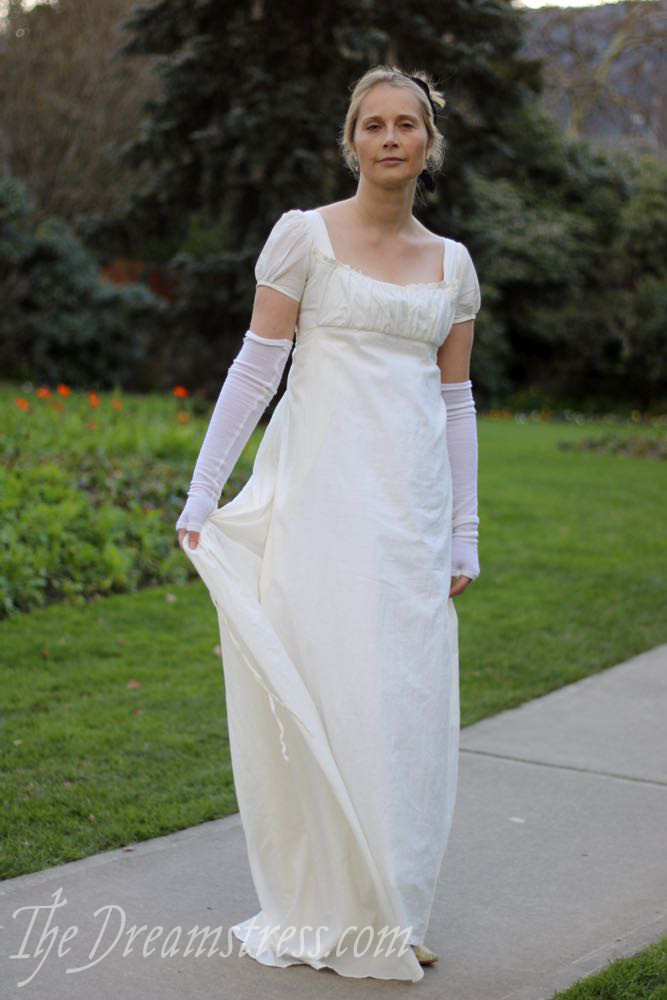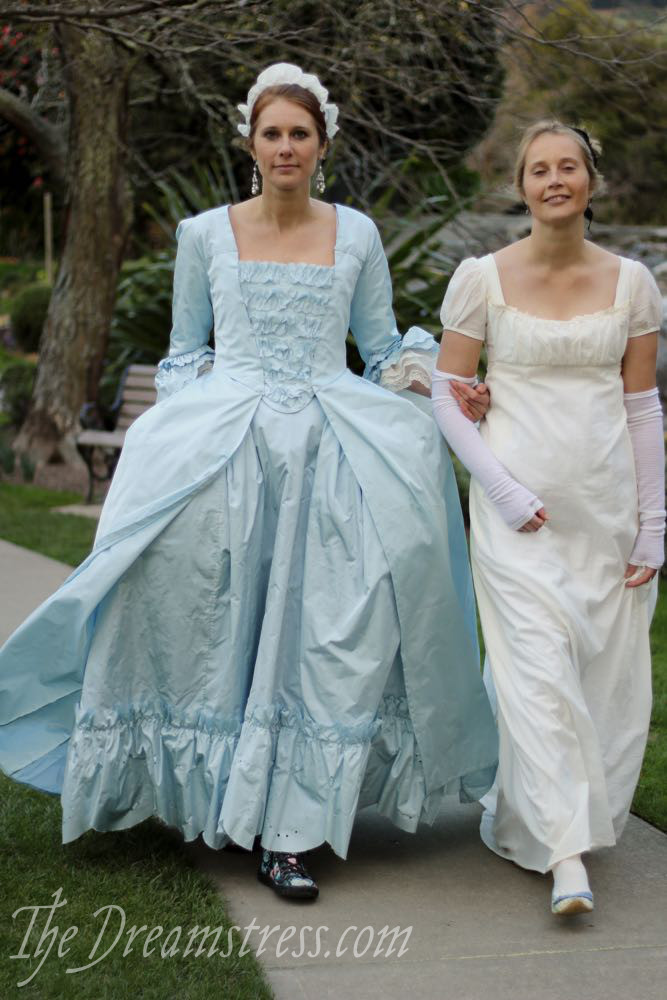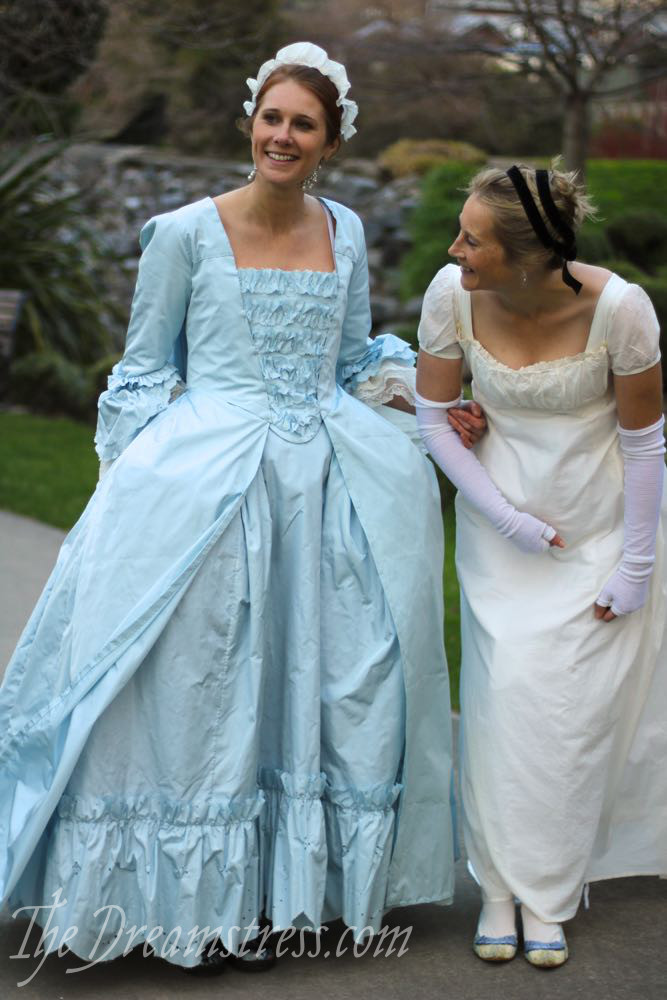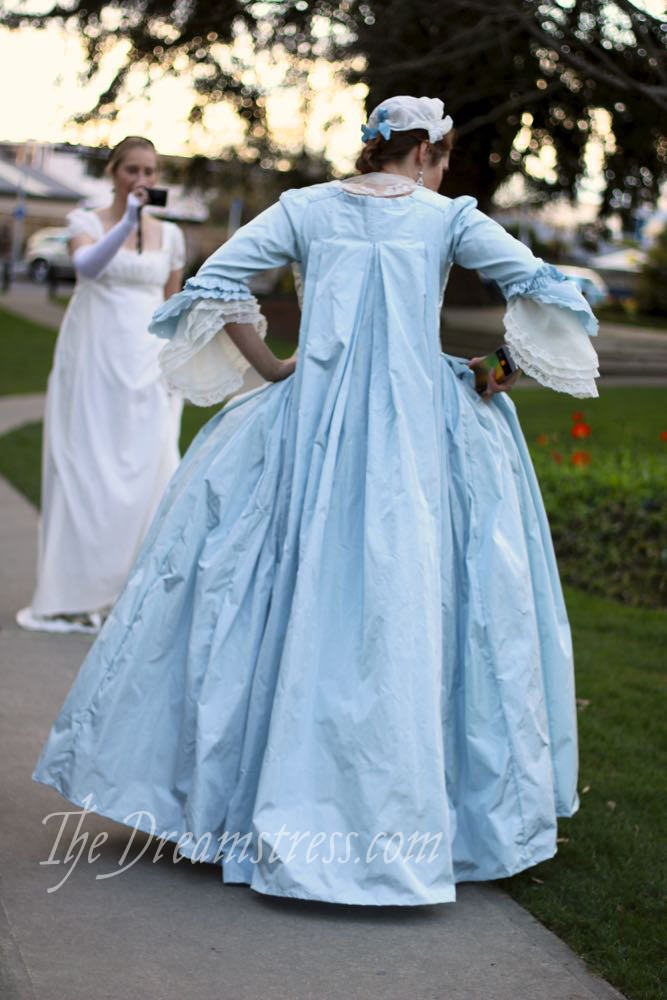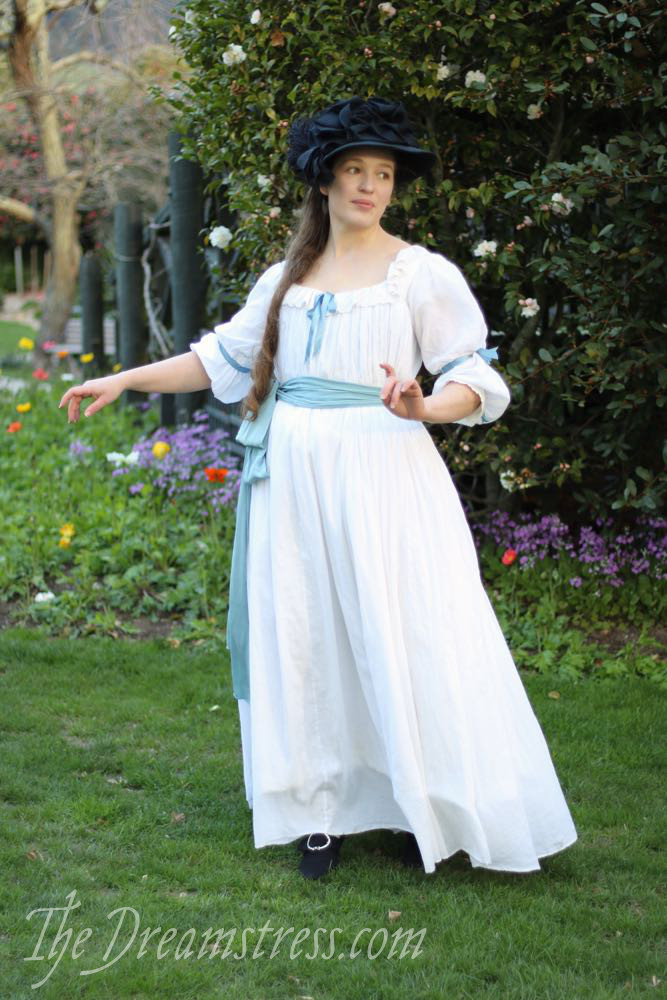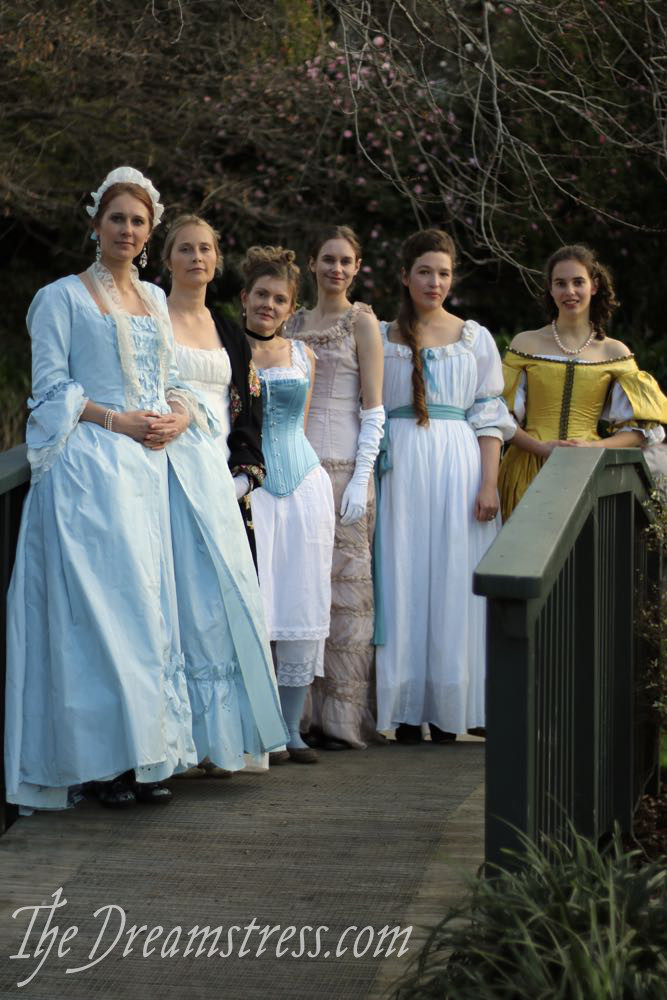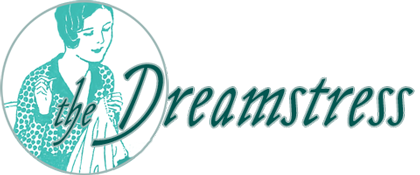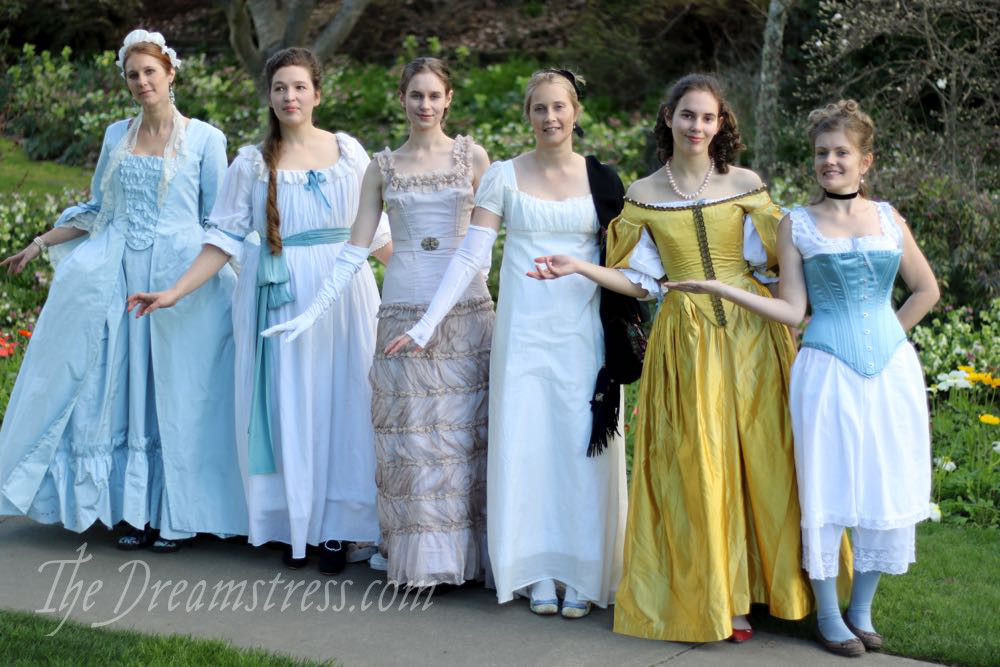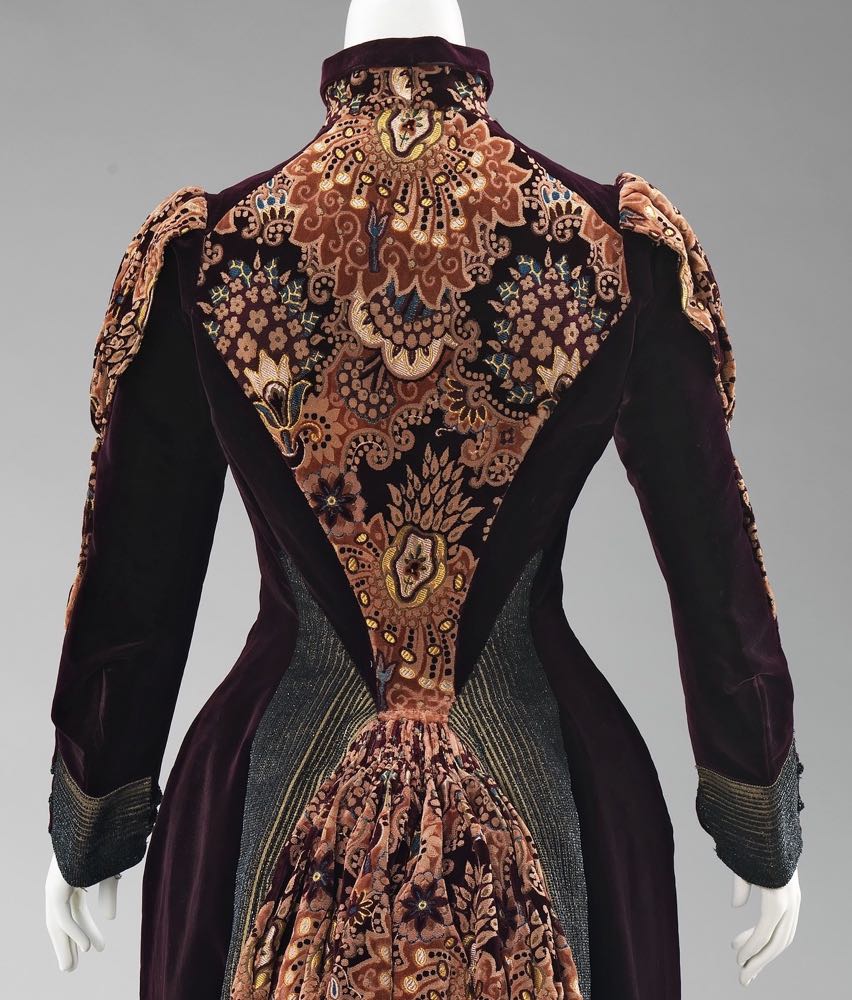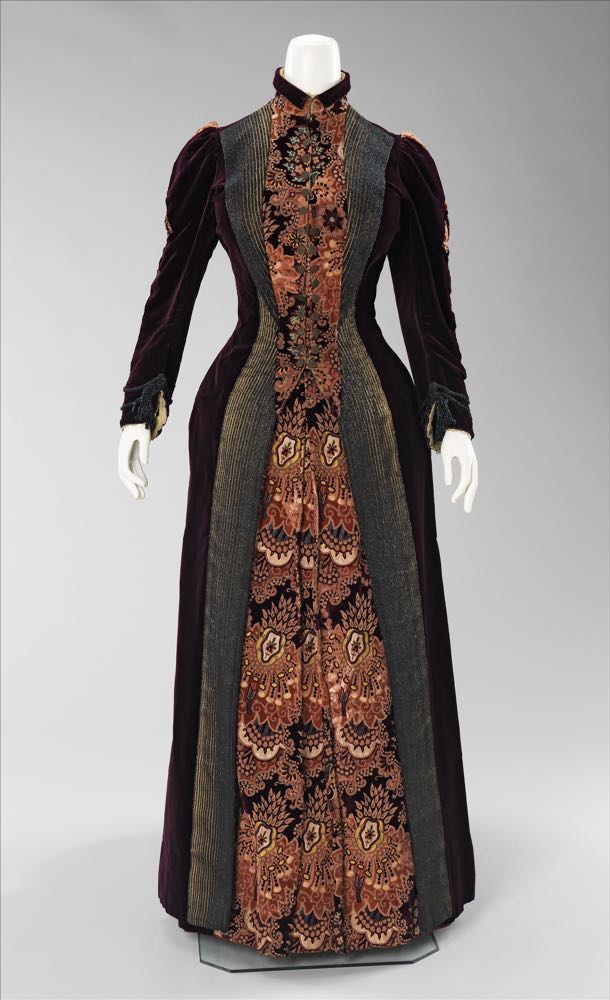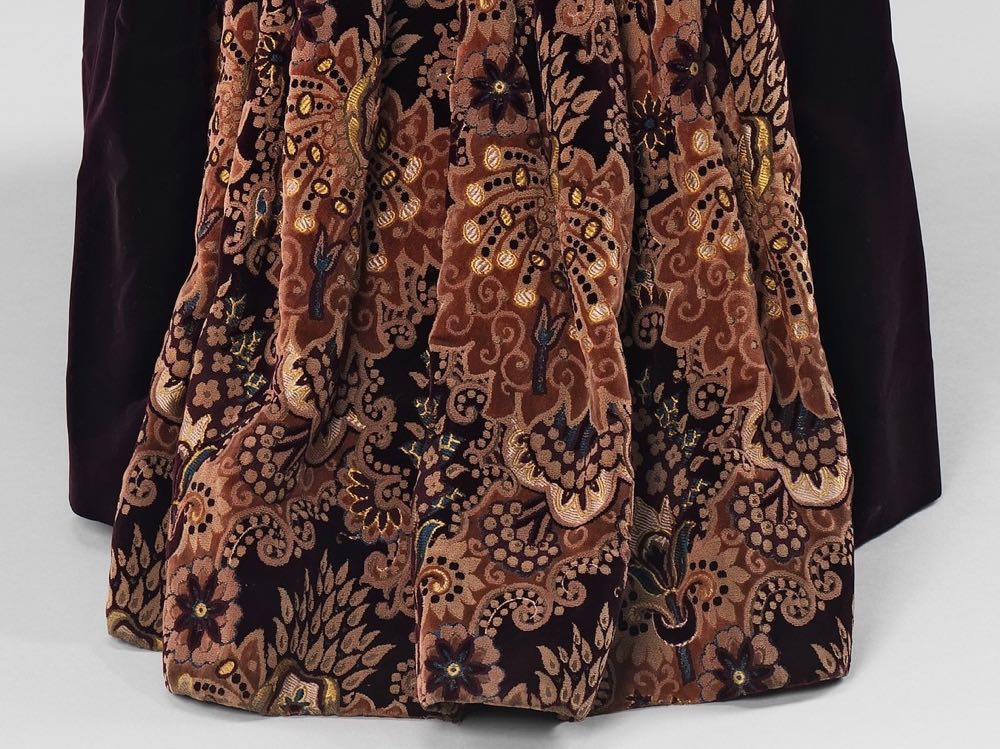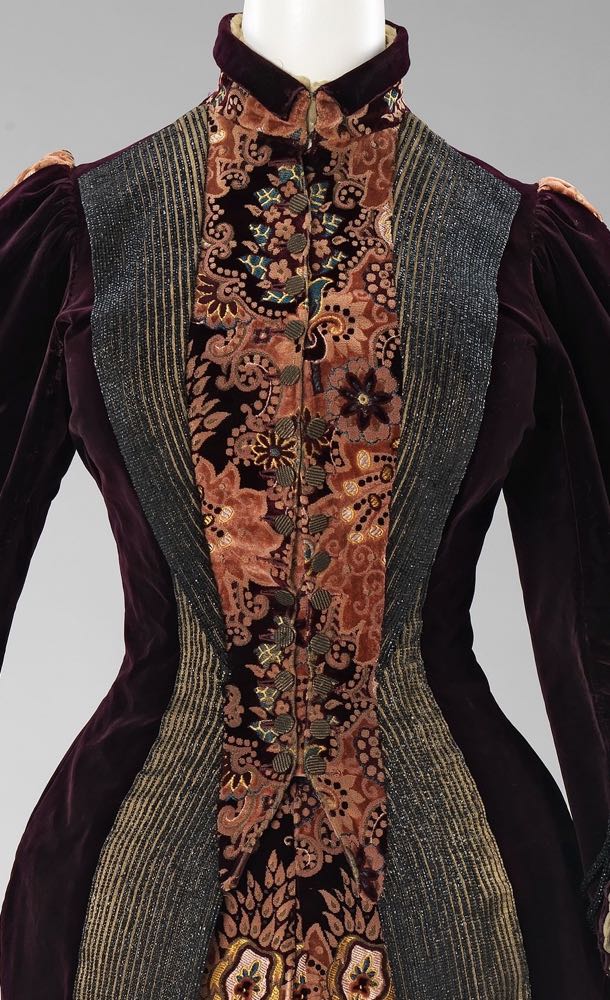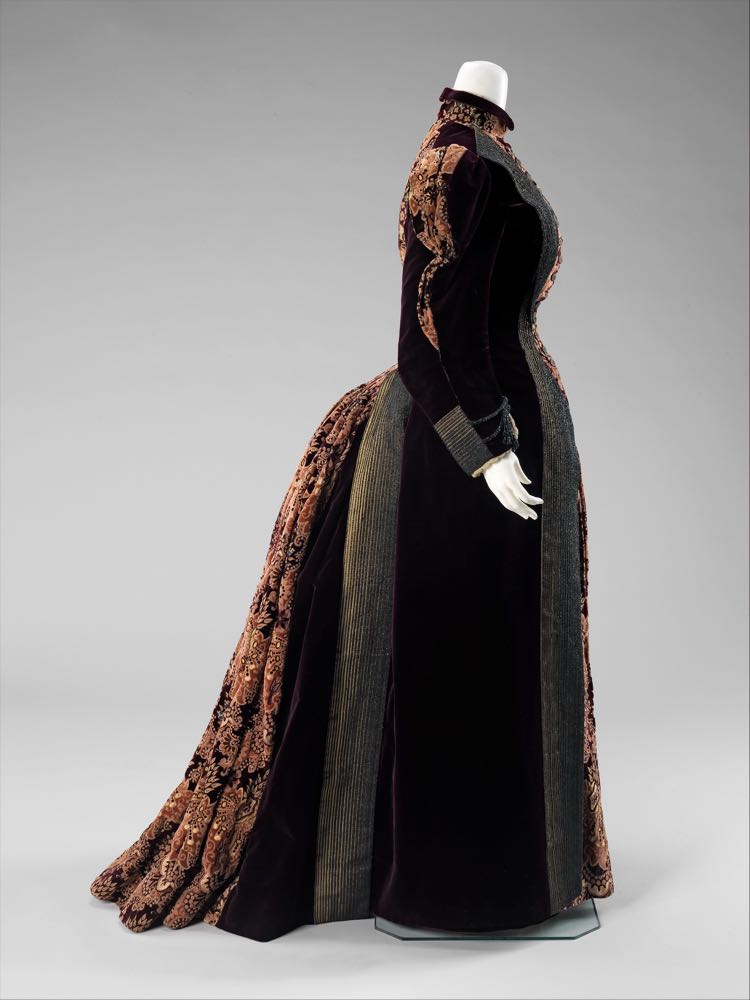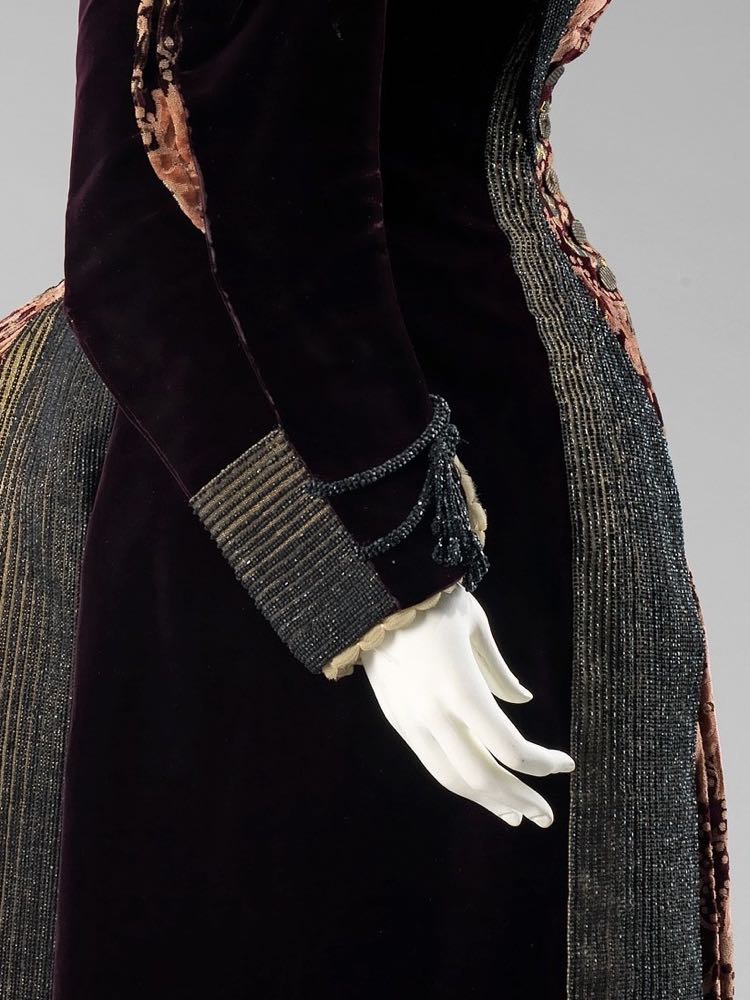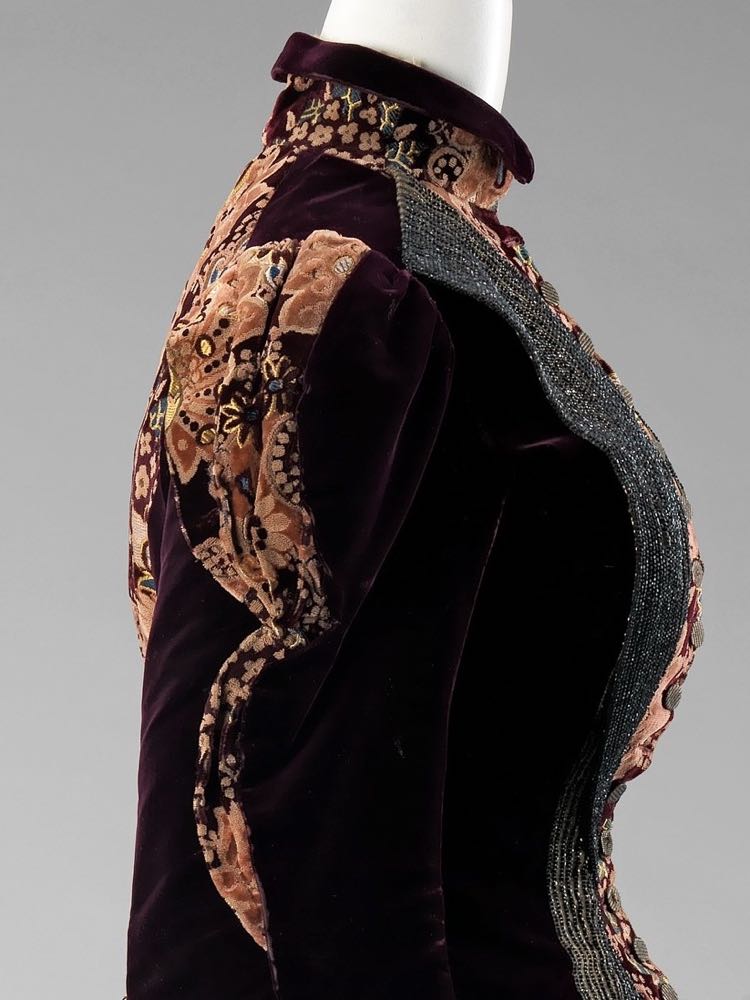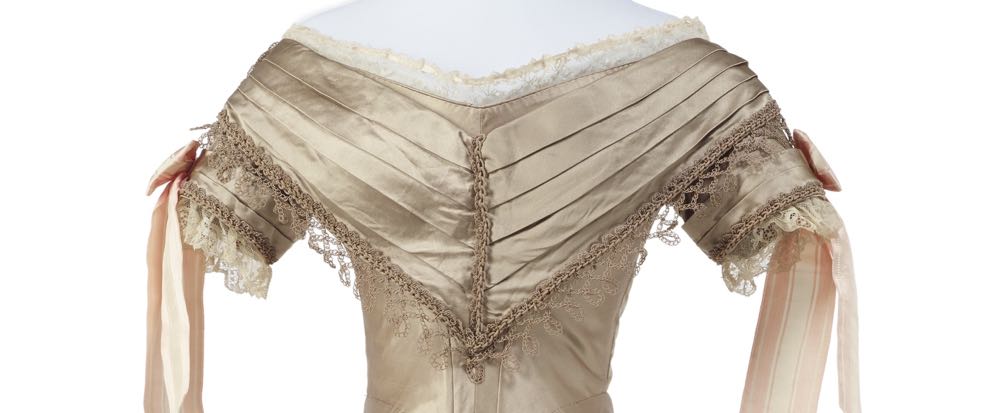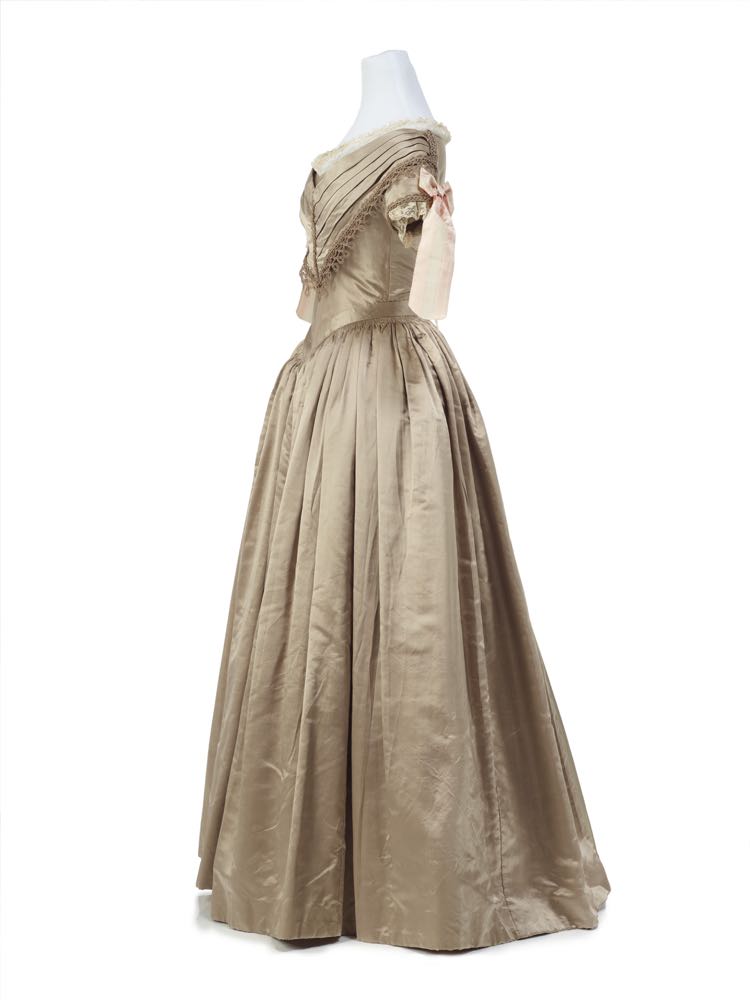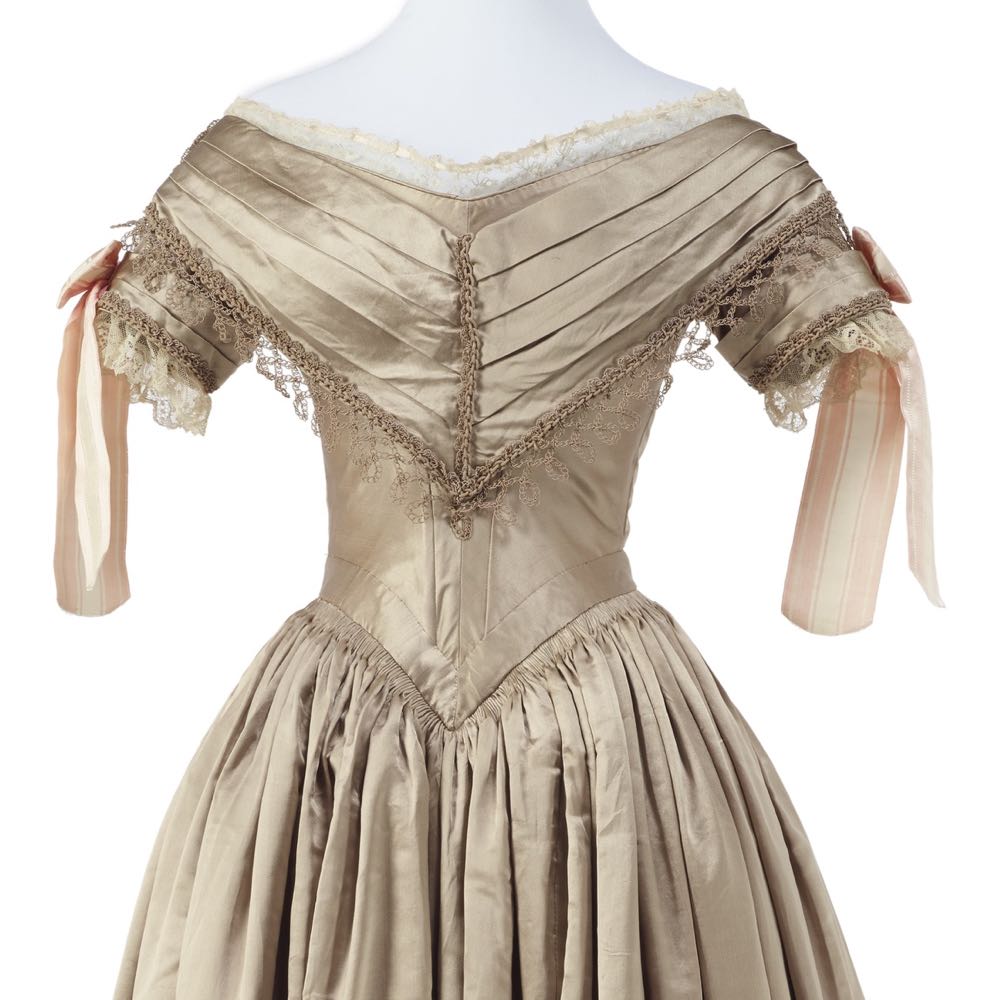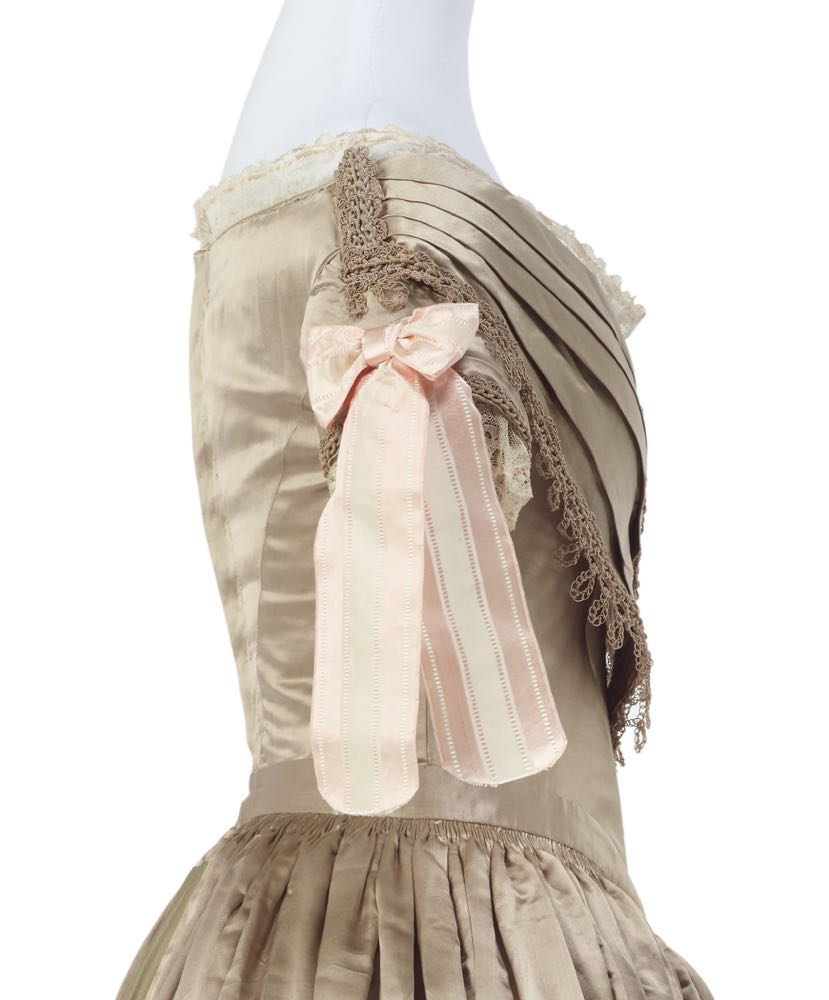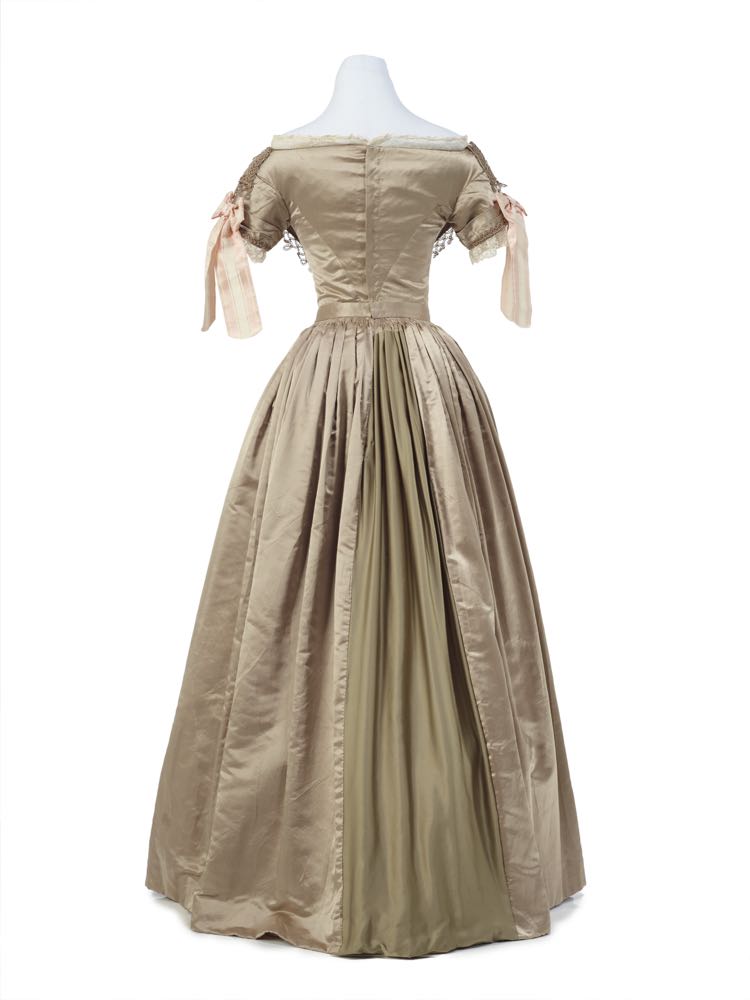Last week’s dress was deemed quietly elegant and almost offensively in-offensive. Beautiful (excepting, perhaps the sleeve bows), but too retiring and neutral to inspire much passion on either end (excepting, perhaps, once again, when it came to the bows). So this week I’ve chosen a dress, that while in (technically) neutral shades of browns & blacks, and sleek in silhouette, is determinedly un-neutral in every other respect. You might, in the end, decide it is also elegant, but not for reasons of quietude!
Things I took away from your responses:
- You thought the dress was pretty but ultimately a little boring.
- You don’t like brown.
- You really, really didn’t like those sleeve bows.
- But even if you don’t like brown and bows you recognise and reward good construction.
The Total: 8.4
Exactly the rating that a dress that would be supremely appropriate at any event without ever drawing attention to itself would be expected to get. And I learned a lot about early Victorian trims that kind of look like tatting, so totally worth it!
This week:
The brief for this week’s dress was ‘shades of brown & black with a simple silhouette” (well, 1880s simple), “but definitely not boring”.
And the dressmaker/couturier (the extremely high-end American based Mme Uoll Gross) delivered.
She took rich plum-brown velvet, and paired it with a wildly pattern art-nouveau meets bizarre silk in shades of rust, peach, and bronze, with hints of blue & bronze.
To this she added beads (I’m 90% sure they are cut steel) in shimmering graphite black, arranging them in subtly variegated lines on fawn brown to create a trompe l’oeil effect which enhances the continuous princess lines and nipped waist of the late second-bustle-era silhouette.
On the back of the dress, the beads highlight the bustle, sculpted of the heavily pleated patterned silk (which almost seems to include a velvet or chenille texture).
On the front of the dress the lines of beading are echoed in the stripes of the buttons that frame the front of the dress. Sadly some of the buttons appear to be missing. It’s not clear if a full 5-6 buttons are missing at the top of the bodice, or if it switches from double buttons to single from the bustline upwards.
The contrasting textures and lines of the dress create a continual play with the silhouette, and the interplay between compression and volume, soft and hard, tailoring and drapery.
Mixing textures, materials, and fabric trims and manipulation techniques are quite common in later Victorian fashion. This example is, however, particularly innovative and experimental in its mix.
Retiring it is not. At the same time, it somehow manages to avoid being quite as shouty as a basic description would suggest.
What do you make of it?
Rate the Dress on a Scale of 1 to 10
A reminder about rating — feel free to be critical if you don’t like a thing, but make sure that your comments aren’t actually insulting to those who do like a garment. Our different tastes are what make Rate the Dress so interesting. It’s no fun when a comment implies that anyone who doesn’t agree with it, or who would wear a garment, is totally lacking in taste.
(as usual, nothing more complicated than a .5. I also hugely appreciate it if you only do one rating, and set it on a line at the very end of your comment, so I can find it! Thanks in advance!)

